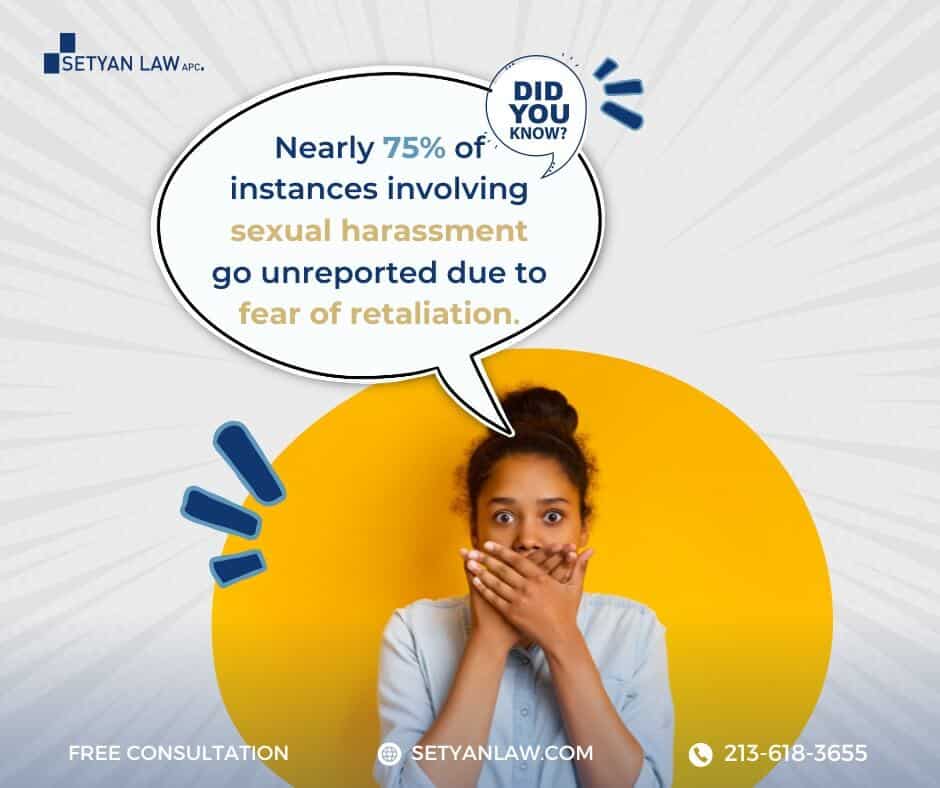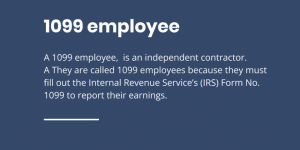Updated October 25, 2025
Alarming Workplace Sexual Harassment Statistics: California's Hidden Crisis 2025
Workplace sexual harassment statistics reveal a disturbing reality that continues to plague California's professional environments despite the state's progressive labor laws. According to recent data, over 7,700 sexual harassment charges were filed with the EEOC in 2023 alone, highlighting the pervasive nature of this issue. Unfortunately, these numbers only represent the tip of the iceberg, as approximately 75% of workplace harassment incidents go unreported, creating a silent epidemic across industries.
Behind these figures are real people whose careers, mental health, and livelihoods have been significantly impacted. From the hospitality sector, where 90% of women report experiencing some form of harassment, to the tech industry, where nearly half of female employees face unwanted advances, the problem transcends occupational boundaries. This article examines the alarming workplace sexual harassment landscape in California, breaking down the legal definitions, industry-specific statistics, demographic patterns, and financial consequences for employers who fail to address this serious workplace issue.
Defining Workplace Sexual Harassment Under California Law
California law establishes comprehensive protections against workplace sexual harassment through specific legal frameworks. Understanding these legal definitions helps both employees and employers recognize, prevent, and address inappropriate workplace conduct.
Quid Pro Quo vs Hostile Work Environment
California recognizes two distinct forms of workplace sexual harassment, each with different characteristics and legal standards.
Quid pro quo harassment (Latin for "this for that") occurs when someone conditions employment benefits on submission to sexual advances or conduct. This type of harassment typically involves:
- A supervisor or person in authority demanding sexual favors
- Explicit or implicit threats regarding job security, promotion, or benefits
- A power imbalance between the harasser and victim
Fundamentally, quid pro quo harassment involves a tangible employment action or threatened consequence. Even a single incident can constitute harassment if severe enough.
Hostile work environment harassment, in contrast, occurs when unwelcome comments or conduct based on sex unreasonably interfere with work performance or create an intimidating, offensive, or hostile atmosphere. This form:
- Need not involve explicit threats about employment
- Can come from supervisors, colleagues, or even non-employees
- Must be either severe or pervasive enough to alter working conditions
- Does not necessarily require the victim to be the direct target of harassment
Notably, someone can experience sexual harassment even when offensive conduct was not aimed directly at them [1].
FEHA and Title VII Legal Definitions
The California Fair Employment and Housing Act (FEHA) and Title VII of the federal Civil Rights Act of 1964 form the legal backbone of sexual harassment protections.
Under FEHA, sexual harassment is defined as unwelcome verbal, visual, or physical conduct of a sexual nature that creates an intimidating or offensive working environment [2]. Additionally, this state law prohibits harassment based on gender identity, gender expression, or sexual orientation – offering broader protections than federal law [1].
Title VII similarly prohibits workplace discrimination based on sex but applies specifically to employers with 15 or more employees [3]. Both laws recognize that unlawful sexual harassment need not be motivated by sexual desire and may involve harassment of a person of the same gender [1].
For conduct to qualify as harassment under these laws, it must be:
- Unwelcome (even if seemingly consensual due to power dynamics)
- Either severe or pervasive enough to create an abusive environment
- Both subjectively offensive to the victim and objectively offensive to a reasonable person [4]
Examples of Unwelcome Conduct in the Workplace
California law identifies numerous behaviors that can constitute sexual harassment when they occur in professional settings:
- Unwanted sexual advances or propositions
- Offering employment benefits in exchange for sexual favors
- Leering, making sexual gestures, or displaying sexually suggestive materials
- Derogatory comments, epithets, slurs, or jokes
- Graphic comments or sexually degrading words
- Unwelcome physical touching, assault, or blocking movements [1]
Furthermore, harassment encompasses both verbal and non-verbal behaviors. Verbal harassment includes unwelcome epithets, comments, or slurs, while visual harassment can involve derogatory posters, cartoons, or obscene gestures [1].
Actual or threatened retaliation against someone for rejecting advances or reporting harassment is also unlawful under California statutes [1]. This protection ensures employees can exercise their rights without fear of reprisal from employers.
California Sexual Harassment Statistics 2025
Recent data paints a concerning picture of sexual harassment prevalence across California workplaces, with numbers revealing both the scale of reported incidents and the considerable volume of cases that never reach official channels.
EEOC Data: 7,700+ Charges Filed in 2023
The U.S. Equal Employment Opportunity Commission (EEOC) reported over 7,700 charges of workplace sexual harassment filed nationwide in 2023, marking a 12-year high and representing a nearly 25% increase from the previous year [5]. This surge in reporting coincides with heightened awareness following workplace harassment movements and improved reporting mechanisms. Moreover, the financial implications have been substantial—the EEOC recovered more than $60 million for victims of sex-based harassment violations under Title VII during fiscal year 2023 [6]. Between 2018 and 2021, the agency processed a total of 98,411 workplace harassment charges across all categories, with 27,291 (approximately 28%) specifically involving sexual harassment [7]. This consistent volume of complaints demonstrates that workplace sexual harassment remains a persistent issue despite decades of awareness campaigns and legislative protections.
CRD Reports: 427 Annual Cases in California
California's Civil Rights Department (CRD) data reveals that the state sees an average of 427 workplace sexual harassment cases annually, based on records spanning from 1997 to 2022 [7]. Although California does not rank among the top ten states for sexual harassment charges per capita [8], these statistics reflect only formally reported cases. The CRD actively works to combat this issue through education—providing updated versions of free online sexual harassment prevention training to 290,632 employees in 2023 alone [9]. Nevertheless, the state continues to show higher-than-national-average rates of sexual harassment incidents, pointing to a persistent workplace problem [10].
Gender Breakdown: 78% of Claims Filed by Women
Consistent with national trends, women file the overwhelming majority of sexual harassment complaints in California. Between fiscal years 2018 and 2021, women submitted 78.2% of all sexual harassment charges to regulatory agencies [5][7][8]. This gender disparity becomes even more pronounced when examining lifetime exposure rates—approximately 86% of women in California report experiencing some form of sexual harassment or assault during their lives [11][12]. Furthermore, the LGBTQ+ community faces disproportionate rates of workplace harassment, with 90% of transgender individuals experiencing workplace harassment of some kind [13]. The data confirms that while sexual harassment affects workers across gender identities, women bear a significantly higher burden of these unwanted behaviors.
Underreporting Rate: 75% of Cases Go Unreported
Perhaps most alarming is what the official statistics fail to capture. Research consistently shows that approximately 75% of all workplace sexual harassment incidents go unreported [5][13]. The National Sexual Violence Resource Center estimates this underreporting rate could be even higher, with 85% of people who experience sexual harassment never filing formal legal charges [8]. Several factors contribute to this reporting gap:
- Fear of retaliation—55% of victims who report harassment experience some form of retaliatory action [13]
- Concern about hostile workplace repercussions or job loss
- Embarrassment or shame associated with the experience
- Self-doubt about the seriousness of incidents
- Lack of confidence in the reporting system—only 15% of women believed their claim was properly handled [7]
In fact, EEOC data indicates that 43.5% of sexual harassment complaints were filed alongside retaliation charges between 2018 and 2021, suggesting that fear of workplace backlash remains well-founded [8]. Overall, this significant underreporting means the true prevalence of workplace sexual harassment in California is likely substantially higher than official statistics indicate.
Industries with the Highest Harassment Rates
Some industries consistently show higher sexual harassment rates because of their structural characteristics, power imbalances, and workplace cultures. Data reveals concerning patterns across several key sectors in California's economy.
Hospitality and Food Service: 90% of Women Affected
The hospitality industry tops workplace harassment statistics, with 90% of women in the restaurant industry reporting some form of sexual harassment [5]. A nationwide study further confirmed this trend, finding that 89% of hospitality workers had experienced at least one sexual harassment incident during their careers [1]. Among these workers, 56% reported harassment from customers or guests, whereas 22% identified managers as perpetrators [1]. Consequently, the accommodation and food service sector accounts for approximately 14.23% of all sexual harassment charges filed [11], making it the industry with the highest concentration of complaints.
Healthcare: 50% of Nurses Report Harassment
Healthcare professionals face substantial harassment risks, particularly nurses and direct care providers. Statistics show that over 50% of female nurses, physicians, and students have reported sexual harassment [14]. Unfortunately, many victims remain silent—though 60% of nurses experienced harassment, only 27% reported these incidents to employers [15]. The healthcare and social assistance sector represents roughly 11.48% of all EEOC sexual harassment charges [15]. Among nurses who experienced harassment, 56% encountered verbal misconduct whereas 37% suffered physical harassment [15].
Tech Sector: 48% of Women in Tech Report Incidents
In California's male-dominated tech industry, 48% of women report workplace harassment experiences [5]. This sector faces unique challenges including gender imbalance—women hold just 26% of senior-level positions at Fortune 500 tech companies [15]. The problem extends beyond general harassment; indeed, 20% of women in tech reported quid pro quo situations where they were propositioned for sex in exchange for promotions [15]. Among women founders who experienced harassment, 60% reported unwanted physical touching as the most common form [15].
Retail and Customer Service: Customer-Driven Harassment
Retail workers face dual harassment risks from both supervisors and customers. The retail sector accounts for approximately 13.44% of all sexual harassment charges [11], making it the second-highest industry for complaints. California law explicitly protects employees from non-employee harassment, requiring businesses to take reasonable steps to prevent customer-perpetrated misconduct [16]. Unfortunately, once harassment occurs, companies often fail in their legal duty—three-quarters of hospitality workers reported uncertainty about whether their employer even had an anti-sexual harassment policy [1].
Throughout these high-risk industries, common factors include unequal power dynamics, high levels of customer interaction, and frequently male-dominated work environments [5]. These structural elements create conditions where inappropriate behavior becomes normalized, presenting ongoing challenges for workplace safety.
Demographics Most Affected by Harassment
Beyond industry-specific patterns, workplace sexual harassment statistics reveal that certain demographic groups experience disproportionately higher rates of unwanted conduct. Data shows that age, sexual orientation, economic status, and gender all significantly influence harassment vulnerability.
Young Workers (18–29): Highest Risk Group
Young adults aged 18-29 face a 105% higher likelihood of reporting sexual harassment compared to workers 30 and older [11]. This vulnerability extends to teenage workers, with studies revealing that 24% of workers aged 14-17 report experiencing sexual harassment, and 6% report sexual assault [17]. Alarmingly, two-thirds of female high school students and one-third of male high school students with part-time jobs report workplace sexual harassment [17]. These young employees primarily experience harassment from co-workers (61%), followed by supervisors (19%) and customers (18%) [17].
Several factors contribute to this heightened risk, primarily inexperience with workplace norms and limited knowledge of legal protections. Teenagers frequently work in hospitality and retail—sectors with the highest harassment rates—yet often receive minimal training about sexual harassment policies [17]. Subsequently, many young workers accept harassment as a normal part of work life [17].
LGBTQ+ Employees: 50% Report Harassment
Nearly half (47%) of LGBTQ+ employees report experiencing workplace discrimination or harassment based on their sexual orientation or gender identity [4]. The statistics become especially troubling for transgender and non-binary (TNB) employees, who experience harassment at more than twice the rate of cisgender LGBQ employees (26% vs. 10%) [4]. Furthermore, TNB employees report discrimination at significantly higher rates (55%) compared to cisgender LGBQ employees (31%) [4].
Racial identity creates additional layers of vulnerability—LGBTQ+ employees of color face approximately twice the harassment rates (16% vs. 9%) of their white counterparts [4]. Currently, 90% of transgender individuals experience harassment on the job [11].
Low-Wage and Immigrant Workers: Fear of Retaliation
Low-wage workers frequently face workplace sexual harassment yet remain among the least likely to report incidents. Critically, these employees often work in isolation—cleaning office buildings at night, picking produce in fields, or working in private homes—creating environments where harassment thrives [18]. For immigrant workers, fear of deportation serves as a powerful silencing tool that supervisors exploit to prevent reporting [18].
The power dynamics are stark: supervisors' ability to reduce hours, terminate employment, or threaten immigration status creates extraordinary pressure against reporting [18]. Consequently, many immigrant workers endure harassment silently rather than risk family separation [18].
Men in Male-Dominated Fields: Underreported Cases
Despite comprising approximately 22% of sexual harassment claims [13], men's experiences remain vastly underreported. Foreign-born men in California report harassment at significantly higher rates—75% compared to 50% of U.S.-born men [11]. Simultaneously, men in male-dominated industries like construction and law enforcement face unique stigmatization when reporting harassment [3].
Overall, these demographic patterns reveal that harassment disproportionately affects those with the least workplace power and institutional protection.
Legal and Financial Impact on Employers
The financial consequences for employers who fail to prevent workplace sexual harassment extend far beyond legal settlements, affecting their bottom line in multiple ways.
Average Settlement Ranges: Six to Seven Figures
Sexual harassment litigation presents substantial financial risks to California employers. Average EEOC settlements nationwide stand at $36,798 [11], yet this figure jumps dramatically to $217,000 when cases proceed to trial [11]. Throughout California, settlements typically range from $100,000 to $500,000 with strong evidence [11]. Settlement values generally fall into three categories:
- Low-range ($5,000–$50,000) for less severe cases
- Mid-range ($50,000–$150,000) for repeated harassment
- High-value ($150,000+) for egregious violations or retaliation
Major corporations have paid multi-million dollar settlements, such as a $5.8 million agreement involving 21 female workers [19].
Loss of Productivity and High Turnover
Apart from direct legal costs, harassment creates operational inefficiencies. Among harassment victims, 75% report their job performance suffered markedly [11]. Additionally, affected workers exhibit lower job satisfaction, worse psychological health, and diminished organizational commitment [11]. Ultimately, shareholder value losses range from $900,000 to $2.2 billion annually per harassment-prone company [11].
Reputation Damage in Publicized Cases
Public harassment cases damage company reputation, straining relationships with partners, clients, and customers [20]. This reputational harm hinders talent recruitment and retention [2], perpetuating cycles of diminished workplace culture.
Mandatory Training Compliance Under SB 1343
Since January 2019, California Senate Bill 1343 requires employers with five or more employees to provide sexual harassment prevention training [21]—two hours for supervisors and one hour for non-supervisory staff every two years [11]. New supervisors must complete training within six months of promotion [11]. For seasonal workers employed less than six months, training must occur within 30 calendar days or 100 hours worked, whichever comes first [21]. Employers must maintain documentation for at least two years [11].
Conclusion
Workplace sexual harassment continues to be an alarming reality throughout California despite progressive labor laws and increased awareness. The statistics paint a troubling picture across industries, with hospitality workers facing the highest rates as 90% of women report some form of harassment. Healthcare, tech, and retail sectors follow closely behind, each dealing with their unique manifestations of this pervasive problem.
Certainly, the official numbers only represent a fraction of actual incidents. Three-quarters of harassment cases go unreported due to fear of retaliation, shame, or lack of faith in reporting systems. This silent majority creates an invisible crisis affecting productivity, mental health, and workplace culture throughout the state.
Young workers aged 18-29 face the greatest risk, experiencing harassment at rates 105% higher than older colleagues. LGBTQ+ employees, particularly transgender individuals, endure discrimination at significantly elevated levels. Low-wage and immigrant workers often remain silent, fearing economic or immigration consequences.
The financial impact on employers proves substantial as well. Beyond legal settlements ranging from $100,000 to millions, companies suffer productivity losses, increased turnover, and reputation damage. These combined costs affect not only workplace culture but also shareholder value by millions of dollars annually.
California law establishes clear protections through FEHA and mandatory training requirements. Nevertheless, the persistence of harassment statistics demonstrates that legal frameworks alone cannot solve this deeply rooted issue. Organizations must foster cultures of respect and accountability while ensuring victims have safe pathways to report misconduct.
Addressing workplace sexual harassment requires commitment from employers, employees, and regulatory bodies alike. Though progress has occurred, these alarming statistics reveal considerable work remains before California workplaces truly become harassment-free environments for all workers regardless of gender, age, orientation, or industry.
If you need workplace harassment litigation, please call Setyan Law at (213)-618-3655. Free consultation.







